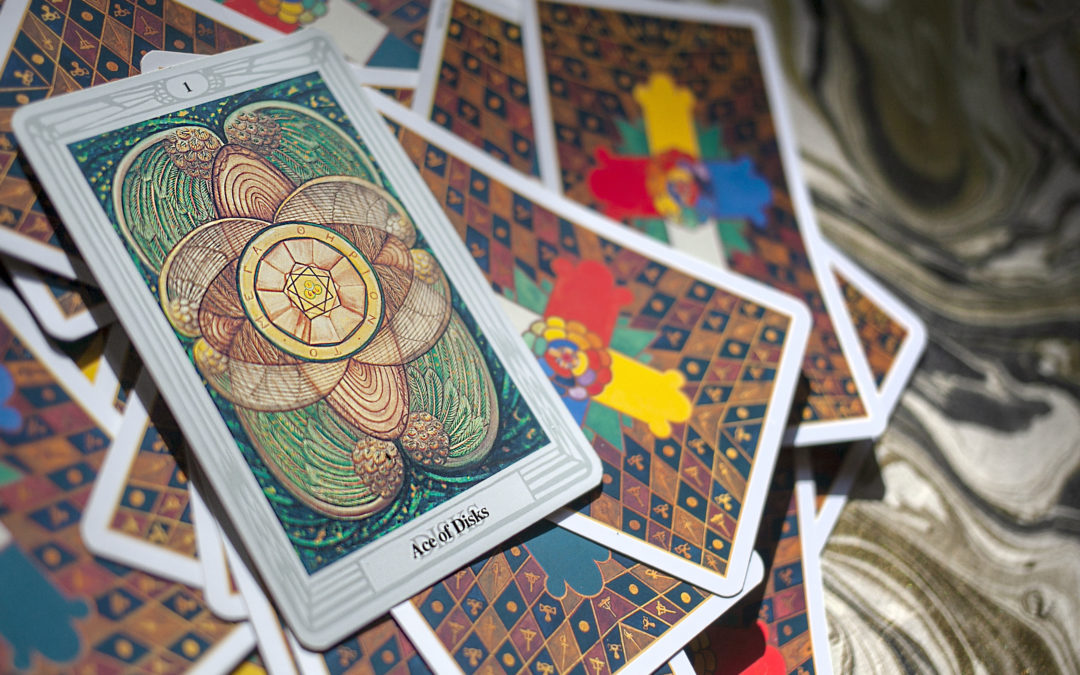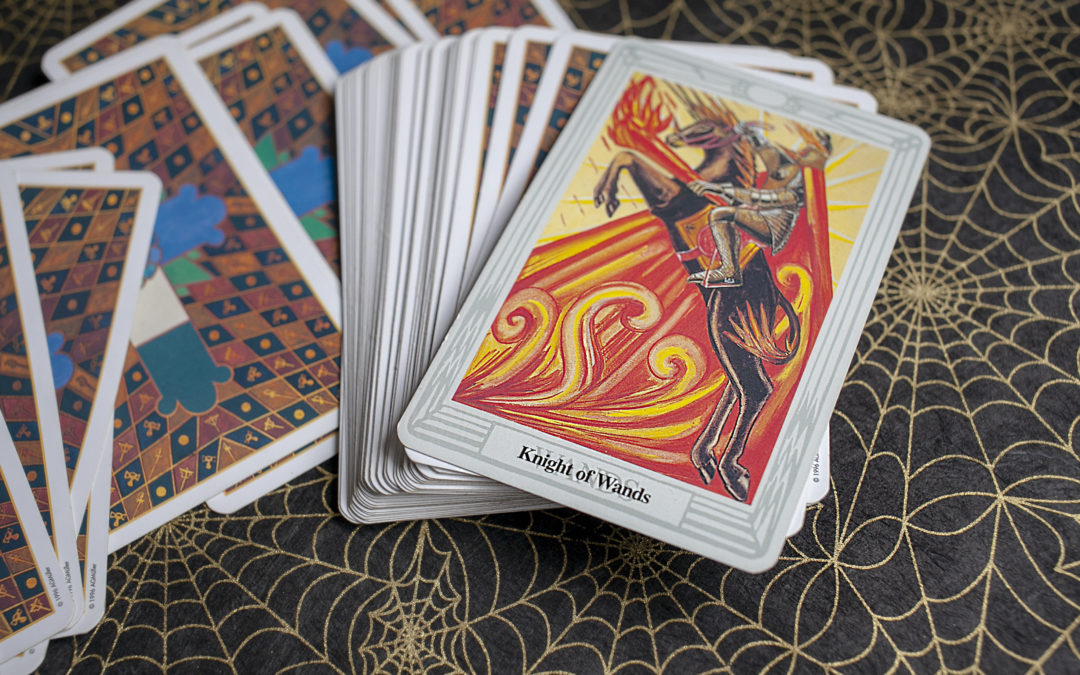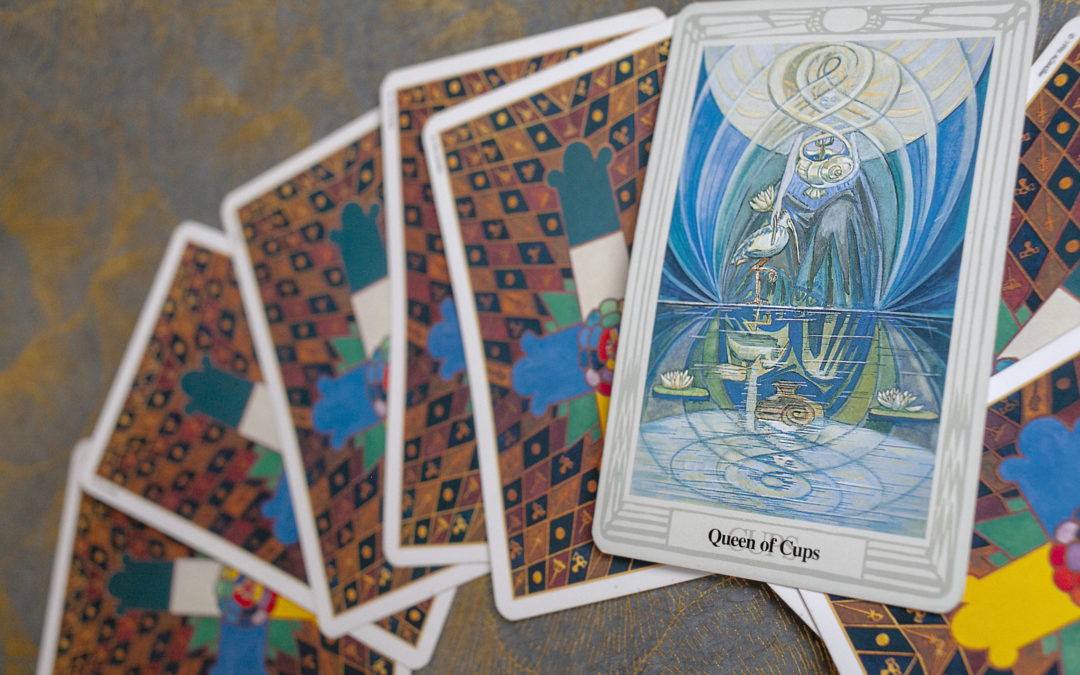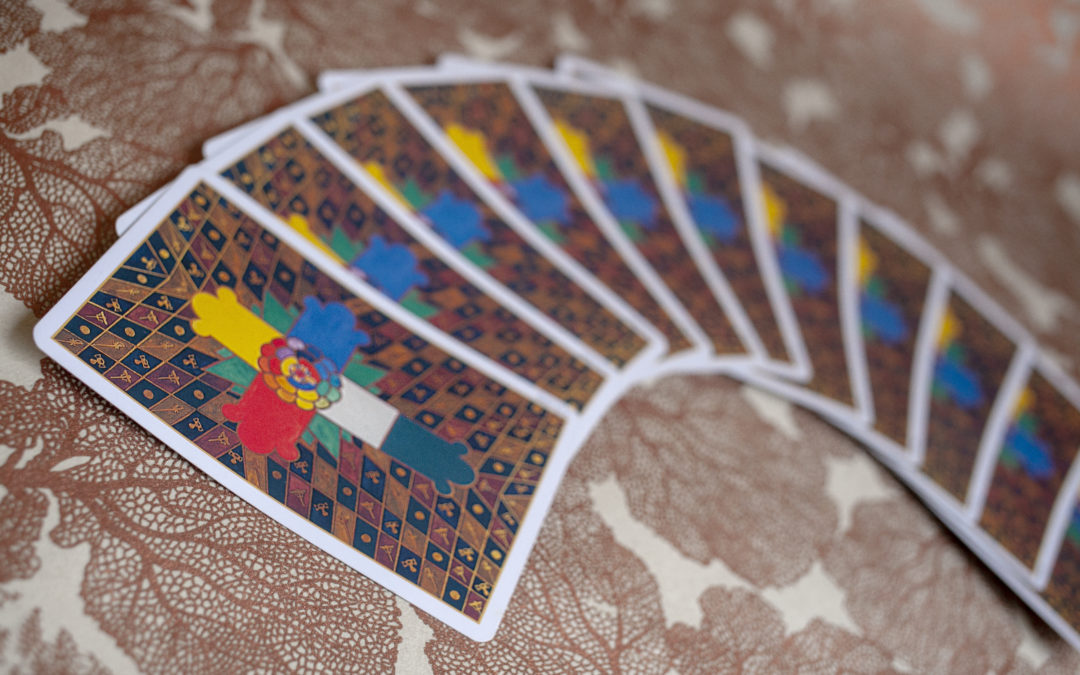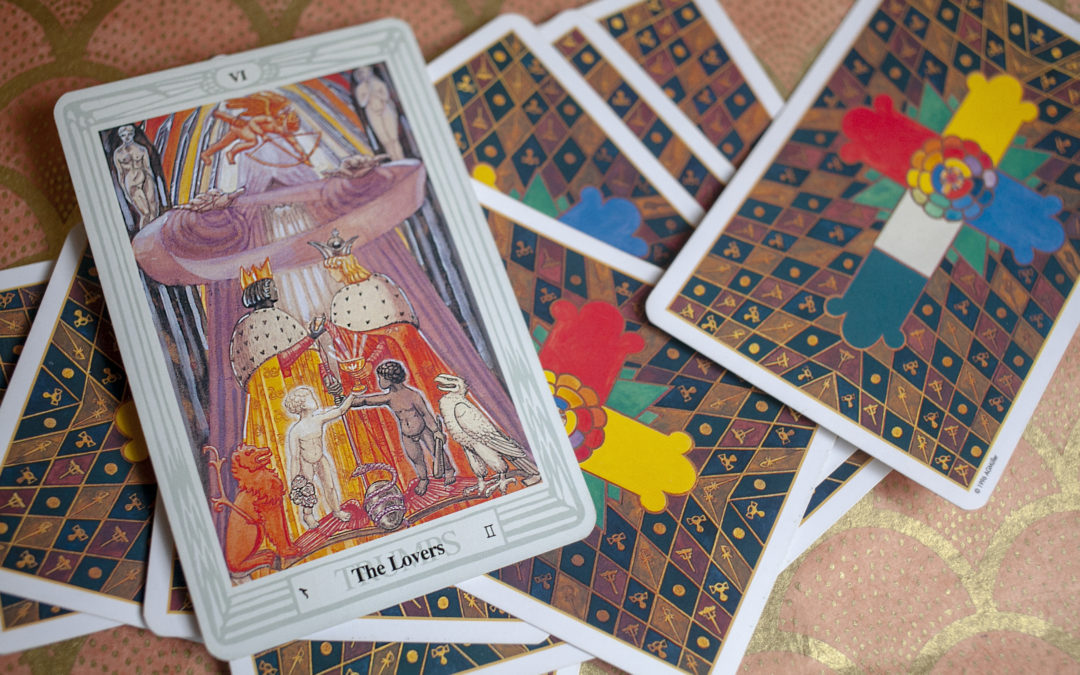
The Lovers
On first glance, this card couldn’t appear less like the Twins. It feels opulent. Heavy. Weighted like bodies or feelings. When I think of Gemini, I imagine more aerial beings, like bees whisking between stalks of lavender, spreading their pollen. (There is actually bee imagery on this card, if you look closely: on the Empress’ robe. By contrast, the Emperor wears snakes.)
But the entire card is a mirror. At this point it is worth acknowledging that the card itself is a twin to the Art card (equivalent of Temperance in other decks.) Both cards feature twin imagery, and they mirror each other. In The Lovers, we see a red lion and white eagle. In Art, these colours are reversed. Two naked babes stand at the centre: one carries a bouquet of flowers and a chalice. The other, a hammer and a lance. According to Crowley, they represent Cain and Abel. Above them, we see the Emperor and Empress, and above the Emperor and Empress: a violet wizard (the Hermit), his face shrouded by the magic that whips about his hands. At the top, we find two nude figures: Lilith and Eve. Cupid arcs over the Hermit with his bow—and even this shape is reflected in the hidden bow at the bottom of the card, which nestles an Orphic Egg. It’s one of the most complicated cards in the deck.
In his Book of Thoth, Crowley writes: “Each of these symbols is in itself double, so that the meanings form a divergent series, and the integration of the Card can only be regained by repeated marriages, identifications, and some form of Hermaphroditism.”
I like this sentence as it applies to Gemini minds: themselves double, forever spinning a divergent series of thoughts, finding integration by way of repeated symbolic marriages, identifications, “and some form of Hermaphroditism.” (Side note: Hermaphroditos was the son of Hermes and Aphrodite. As the name implies, they possessed traits of both sexes.)
It makes me think of how light shines off the surface of the ocean: catching many faces in the surface of the wave. Does that make the light, or the wave, inconstant? Only if you’re fixating too narrowly on fluid shards of water. Only if you’re trying to fix a moving thing.
Gemini’s air element may be represented by the sacred lance in the centre of the card. There are also swords in the background, curved and projecting a form of cage. This imagery is important because sharp items sever. How do you reach two? By splitting the one in half.
Chani Nicholas writes that no one looks harder for their counterpart than Gemini. As if they yearn toward a mirror image they can’t fully embody on their own: not without shifting, not without tasting everything. Not without reaching and bending and veering toward their imagined twin.
Angeles Arrien’s interpretation of The Lovers card begins with a quote from Anais Nin: “The value of personal relationship to all things is that it creates intimacy and intimacy creates understanding and understanding creates love.” And love is not singular. What we use one word for in English, other languages find plural; Arabic includes eleven words for love; Sanskrit has 96 (!). Ancient Greek differentiates between eros (passionate love), philia (friendship), storge (parents and children), agape (universal love), ludus (playful, 5th house love), pragma (enduring love), and philautia (self love), among others. All shifting faces in the body of a wider ocean.
References:
Book of Thoth by Aleister Crowley
The Tarot Handbook by Angeles Arrien

